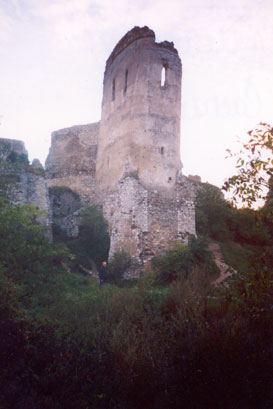“The stone walk is paved with dark cries”. PIERRE-JEAN JOUVE
Inquiry into Erzsebet’s crimes began late in the year by the Lord Palatine, Count Gyorgy Thurzo, and one of the members of the Bathory family who had planned to have her retired to a convent.

Prime Minister Thurzo of Hungary who was a cousin of the Countess stormed the castle with soldiers to arrest the Countess and her associates on December 30th.
At the head of a contingent of armed men, Thurzo arrived unannounced at the castle. In the cellar, cluttered with the remains of the previous night’s bloody ceremony, he found a beautiful mangled corpse and two young girls who lay dying.
But that was not all. He smelt the smell of the dead; he saw the walls splattered with blood; he saw the Iron Maiden, the cage, the instruments of torture, bowls of dried blood, the cells – and in one of them a group of girls who were waiting their turn to die and who told him that after many days of fasting they had been served roast flesh that had once belonged to the bodies of their companions.
The Countess, without denying Thurzo’s accusations, declared that these acts were all within her rights as a noble woman of ancient lineage. To which the Count Palatine replied: ‘Countess, I condemn you to life imprisonment within your castle walls.’
For political reason, Erzsebet never attended her trial. Her powerful family managed to convince King Matthias II of Hungary to indefinitely delay the sentence against probably the extinction of the debt the Crown owed her. She remained confined in her castle while she and her sadistic accomplices were tried for their crimes.
Erzsebet was tried purely on a criminal basis, while her cohorts were charged with vampirism, witchcraft and practicing pagan rituals. All of the torturers were beheaded, except for Ilona Joo and Dorottya Szentes, whose fingers were pulled off before they were burned alive. The Countess was found to be criminally insane and was walled up within a room of Csejthe Castle.
Stonemasons were brought to Castle Csejthe to wall up the windows and doors of the bedchamber with the Countess inside. They only left a small hole through which food could be passed. When everything was ready, four gallows were erected on the four corners of the castle to indicate that within those walls lived a creature condemned to death.
In this way she lived for three years, almost wasting away with cold and hunger without showing the slightest sign of repentance. Countess Bathory writes her last will and testament on July 31st 1614. Later in the year, she was found face-down on the floor, dead, by one of her guards.
The date is reported as either August 14th or the 21st. The local folklore says that she is one of the legendary ghosts that still haunt certain areas in the Carpathians.
Elizebeth Bathory’s story demonstrates how the myth of vampirism can be supported by the misinterpretation of the true-life actions of a deranged criminal and feed the ignorance of believers.
